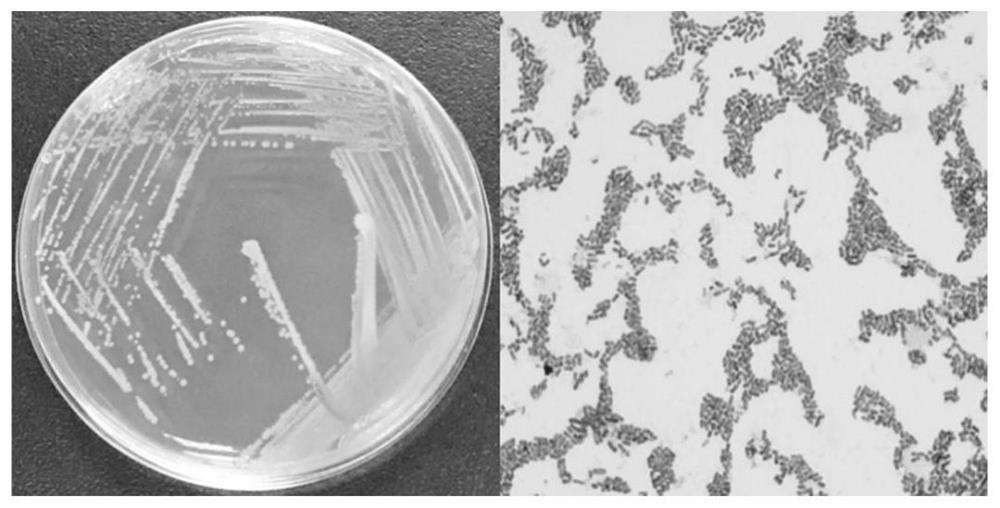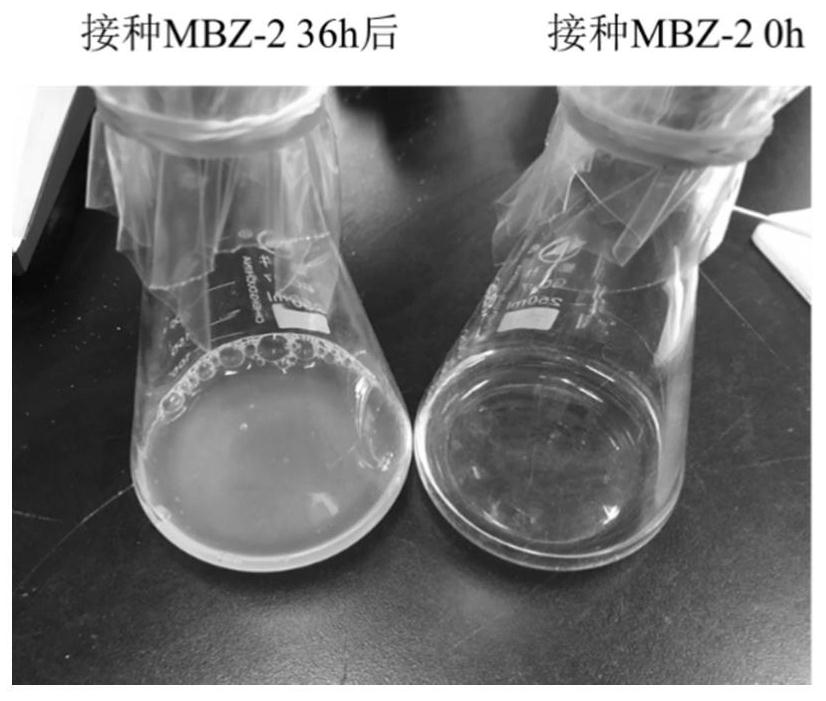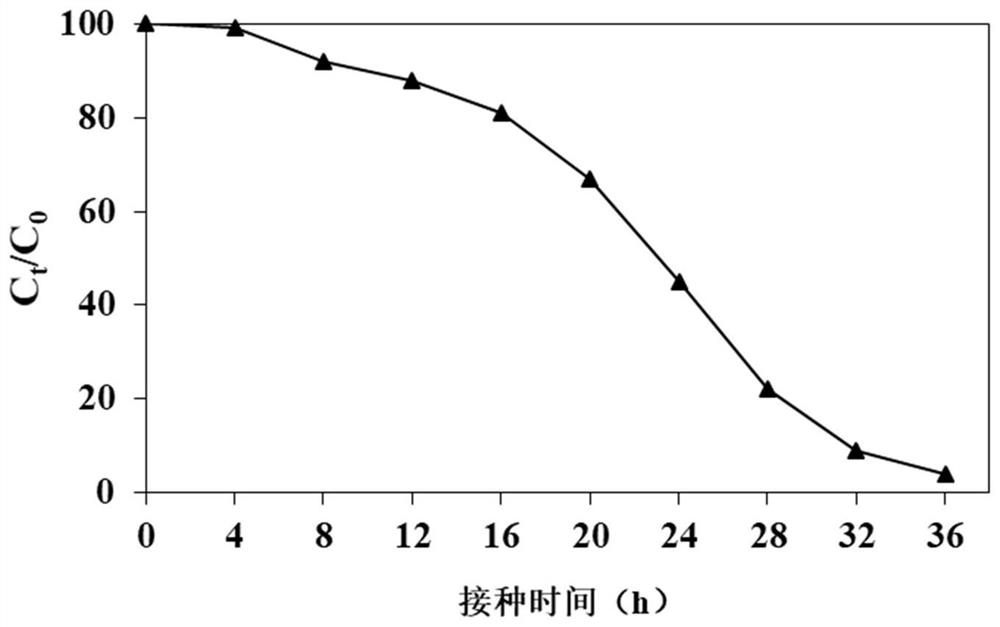Achromobacter and application thereof in degradation of p-toluenesulfonic acid and quizalofop-p-ethyl
A technology of p-toluenesulfonic acid and Achromobacter, applied in the biological field, can solve problems such as environmental pollution, pollution, ecological damage and the like
- Summary
- Abstract
- Description
- Claims
- Application Information
AI Technical Summary
Problems solved by technology
Method used
Image
Examples
Embodiment 1
[0031] Example 1: Isolation of Achromobacter sp MBZ-2
[0032] Sludge samples were collected from the activated sludge tank of the wastewater treatment plant of a pesticide production enterprise in Jiangsu, enriched and cultivated by continuous enrichment culture method, and the degradation effect was tested by high performance liquid chromatography, and the effective enrichment solution was diluted and coated in the containing 0.5g / L solid inorganic salt of p-toluenesulfonic acid (culture medium formula: p-toluenesulfonic acid 0.5g / L, NH 4 Cl 1.0g / L, KH 2 PO 4 0.6g / L, K 2 HPO 4 1.3g / L, NaCl 0.5g / L, MgSO 4 ·7H 2 O0.2 g / L, pH7.0. ) culture medium and cultured in a constant temperature incubator at 30°C until colonies grew. According to the size, color, and shape of the colonies, pick different single colonies to streak and purify. The strain whose degradation efficiency was 98.4% after 72 hours was selected as MBZ-2.
Embodiment 2
[0033] Embodiment 2: Degradation effect determination of quizalofop-ethyl by Achromobacter sp MBZ-2
[0034] Achromobacter sp (Achromobacter sp) MBZ-2 was streaked on the LB solid plate, and then a single colony was picked from the LB plate, inoculated in LB liquid medium, and cultivated in a shaker at 37°C and 180rpm until OD600= After centrifugation at 1.0, 10000rpm, the supernatant was discarded, washed three times with sterile water, and resuspended in an equal volume of sterile water as the seed solution. Inoculate the MBZ-2 seed solution with an inoculation amount of 1vt% in an inorganic salt medium with a quizalofop-p-ethyl concentration of 50mg / L, cultivate it at 37°C in a 180rpm shaker, and measure quizalofop-pyl-ethyl in the solution after sampling and filtering every 4h Heling concentration, the effect is as image 3 Shown, degradation curve see Figure 4 .
Embodiment 3
[0035] Embodiment 3: Degradation effect determination of p-toluenesulfonic acid by Achromobacter sp MBZ-2
[0036] Achromobacter sp (Achromobacter sp) MBZ-2 was streaked on the LB solid plate, and then a single colony was picked from the LB plate, inoculated in LB liquid medium, and cultivated in a shaker at 37°C and 180rpm until OD600= After centrifugation at 1.0, 10000rpm, the supernatant was discarded, washed three times with sterile water, and resuspended in an equal volume of sterile water as the seed solution. Inoculate the MBZ-2 seed solution with an inoculation amount of 1vt% in an inorganic salt medium with a p-toluenesulfonic acid concentration of 500mg / L, cultivate it in a shaker at 37°C and 180rpm, and measure the concentration of the solution after sampling and filtering every 4h. Concentration of p-toluenesulfonic acid, the effect as figure 2 Shown, degradation curve see Figure 5 .
PUM
 Login to View More
Login to View More Abstract
Description
Claims
Application Information
 Login to View More
Login to View More - R&D
- Intellectual Property
- Life Sciences
- Materials
- Tech Scout
- Unparalleled Data Quality
- Higher Quality Content
- 60% Fewer Hallucinations
Browse by: Latest US Patents, China's latest patents, Technical Efficacy Thesaurus, Application Domain, Technology Topic, Popular Technical Reports.
© 2025 PatSnap. All rights reserved.Legal|Privacy policy|Modern Slavery Act Transparency Statement|Sitemap|About US| Contact US: help@patsnap.com



